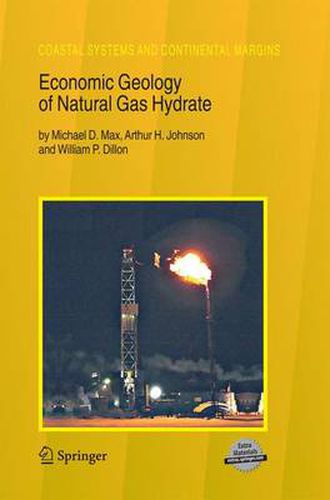Readings Newsletter
Become a Readings Member to make your shopping experience even easier.
Sign in or sign up for free!
You’re not far away from qualifying for FREE standard shipping within Australia
You’ve qualified for FREE standard shipping within Australia
The cart is loading…






This title is printed to order. This book may have been self-published. If so, we cannot guarantee the quality of the content. In the main most books will have gone through the editing process however some may not. We therefore suggest that you be aware of this before ordering this book. If in doubt check either the author or publisher’s details as we are unable to accept any returns unless they are faulty. Please contact us if you have any questions.
This book is a companion to Natural Gas Hydrate in Oceanic and Permafrost Environments (Max, 2000, 2003), which is the first book on gas hydrate in this series. Although other gases can naturally form clathrate hydrates (referred to after as ‘hydrate’), we are concerned here only with hydrocarbon gases that form hydrates. The most important of these natural gases is methane. Whereas the first book is a general introduction to the subject of natural gas hydrate, this book focuses on the geology and geochemical controls of gas hydrate development and on gas extraction from naturally occurring hydrocarbon hydrates. This is the first broad treatment of gas hydrate as a natural resource within an economic geological framework. This book is written mainly to stand alone for brevity and to minimize duplication. Information in Max (2000; 2003) should also be consulted for completeness. Hydrate is a type of clathrate (Sloan, 1998) that is formed from a cage structure of water molecules in which gas molecules occupying void sites within the cages stabilize the structure through van der Waals or hydrogen bonding.
$9.00 standard shipping within Australia
FREE standard shipping within Australia for orders over $100.00
Express & International shipping calculated at checkout
This title is printed to order. This book may have been self-published. If so, we cannot guarantee the quality of the content. In the main most books will have gone through the editing process however some may not. We therefore suggest that you be aware of this before ordering this book. If in doubt check either the author or publisher’s details as we are unable to accept any returns unless they are faulty. Please contact us if you have any questions.
This book is a companion to Natural Gas Hydrate in Oceanic and Permafrost Environments (Max, 2000, 2003), which is the first book on gas hydrate in this series. Although other gases can naturally form clathrate hydrates (referred to after as ‘hydrate’), we are concerned here only with hydrocarbon gases that form hydrates. The most important of these natural gases is methane. Whereas the first book is a general introduction to the subject of natural gas hydrate, this book focuses on the geology and geochemical controls of gas hydrate development and on gas extraction from naturally occurring hydrocarbon hydrates. This is the first broad treatment of gas hydrate as a natural resource within an economic geological framework. This book is written mainly to stand alone for brevity and to minimize duplication. Information in Max (2000; 2003) should also be consulted for completeness. Hydrate is a type of clathrate (Sloan, 1998) that is formed from a cage structure of water molecules in which gas molecules occupying void sites within the cages stabilize the structure through van der Waals or hydrogen bonding.